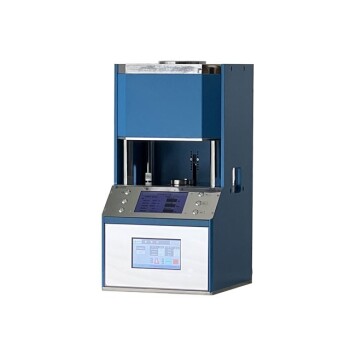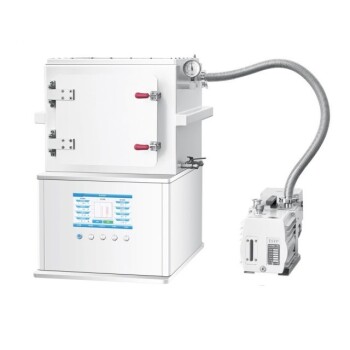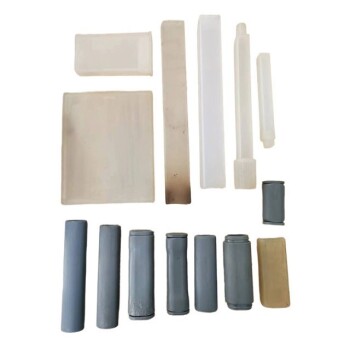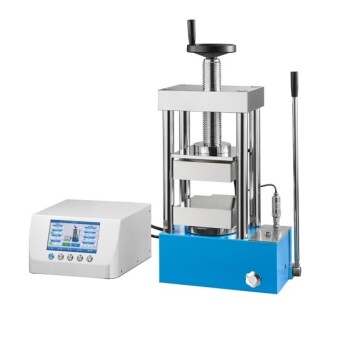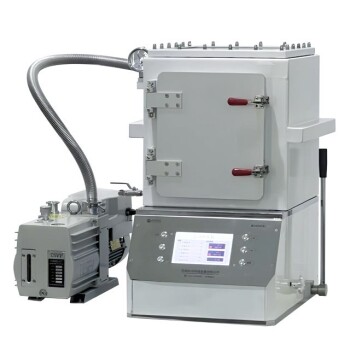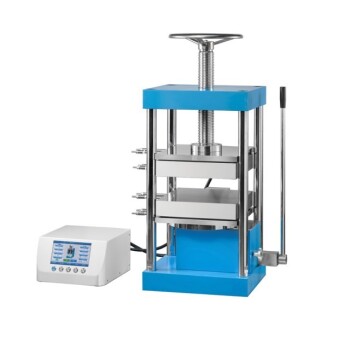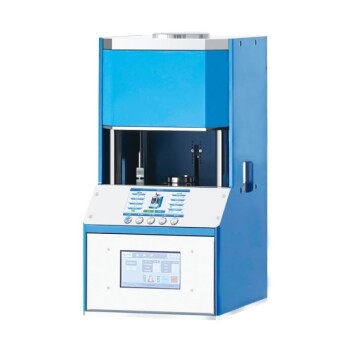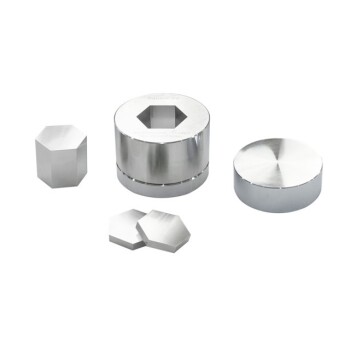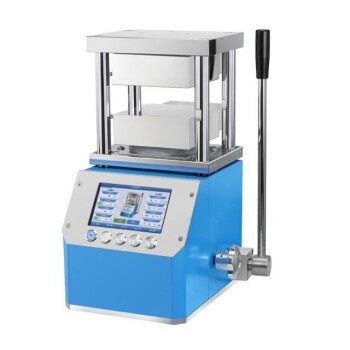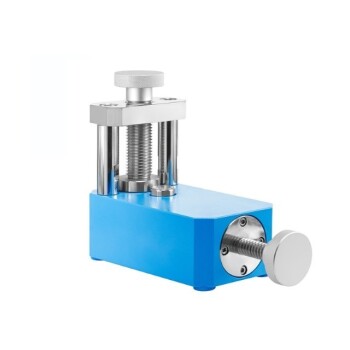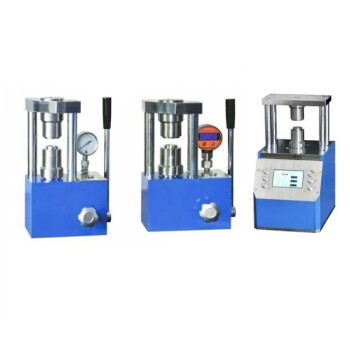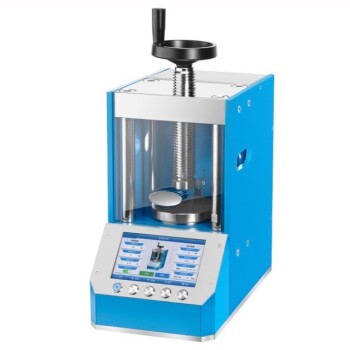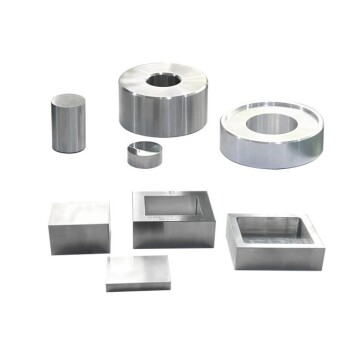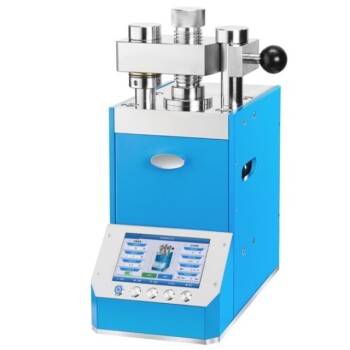In essence, the booster source in Warm Isostatic Pressing (WIP) functions as the heart of the system, injecting the heated liquid medium into the pressing cylinder and then generating and maintaining the precise hydraulic pressure required to consolidate the powder material. It directly controls both the flow rate for filling the mold and the pressure for uniform compression.
The booster source is not merely a pump; it is the core engine that drives the entire consolidation process. Its precise control over pressure and flow is the critical factor that enables Warm Isostatic Pressing to create parts with exceptionally uniform density.
Deconstructing the Warm Isostatic Pressing Process
To understand the booster source's function, we must first understand the system it operates within. WIP is designed to turn powders into solid, uniformly dense components.
The Goal: Uniform Density
The primary objective of WIP is to apply equal pressure from all directions onto a powdered material. This isostatic pressure eliminates density variations that are common in other pressing methods.
The Medium: Heated Hydraulic Fluid
Unlike direct mechanical pressing, WIP uses a heated liquid medium, often warm water, to transmit pressure. This fluid envelops the part, ensuring pressure is applied evenly across every surface.
The Container: The Flexible Mold
The powdered material is held within a sealed, flexible mold or jacket. The flexibility of this mold is crucial, as it allows the hydraulic pressure from the liquid medium to be transferred uniformly to the powder inside.
The Critical Role of the Booster Source
The booster source is the active component that makes this entire process possible. It manages the hydraulic fluid with precision.
Function 1: Injection and Mold Filling
The first task of the booster source is to inject the heated liquid medium from its reservoir into the sealed pressing cylinder that contains the mold. It must do this efficiently to fill the chamber completely.
Function 2: Pressure Generation and Maintenance
Once the cylinder is full, the booster source's primary function begins. It applies and continuously maintains a specific, high hydraulic pressure on the fluid. This pressure is what consolidates the powder into a solid "green" part.
Function 3: Synergy with the Heat Generator
The booster source works in tandem with a heat generator. While the heat generator ensures the liquid medium remains at the correct, stable temperature, the booster source is responsible for moving and pressurizing this temperature-controlled fluid.
Understanding the System's Interdependencies
The success of Warm Isostatic Pressing relies on several components working in perfect harmony. A failure in one part compromises the entire process.
The Risk of Inconsistent Pressure
If the booster source fails to maintain a constant, uniform pressure, the final product will suffer from density variations. This can lead to structural weaknesses, warping, or a rejected part.
The Challenge of Temperature Control
If the heat generator fails, the booster source will pump fluid at the wrong temperature. This can negatively affect the properties of the powder material and the quality of the final consolidated part.
The Importance of the Flexible Mold
Even with perfect pressure from the booster source, a stiff or improperly designed mold will not transmit that pressure evenly. This results in the very density gradients that isostatic pressing is designed to prevent.
Making the Right Choice for Your Goal
Controlling the booster source is fundamental to achieving your desired outcome in Warm Isostatic Pressing.
- If your primary focus is final product consistency: Your control over the booster source's pressure stability is the most critical variable for achieving uniform density.
- If your primary focus is process efficiency: The booster source's flow rate and ability to reach target pressure quickly will directly determine your manufacturing cycle times.
- If your primary focus is material integrity: You must ensure the booster source is operating with fluid that is kept at a precise temperature by the heat generator.
Ultimately, mastering the function of the booster source is essential for controlling the quality and consistency of your final product.
Summary Table:
| Function | Description |
|---|---|
| Injection and Mold Filling | Injects heated liquid medium into the pressing cylinder to fill the mold efficiently. |
| Pressure Generation and Maintenance | Applies and maintains precise hydraulic pressure for uniform powder consolidation. |
| Synergy with Heat Generator | Works with heat systems to ensure temperature-stable fluid for optimal material properties. |
Ready to achieve uniform density and superior part quality in your lab? KINTEK specializes in advanced lab press machines, including automatic lab presses, isostatic presses, and heated lab presses, designed to deliver precise pressure and temperature control for your specific needs. Our equipment ensures consistent results, improved efficiency, and enhanced material integrity. Contact us today to discuss how our solutions can elevate your laboratory processes!
Related Products
- Automatic High Temperature Heated Hydraulic Press Machine with Heated Plates for Lab
- Automatic Heated Hydraulic Press Machine with Hot Plates for Laboratory
- Heated Hydraulic Press Machine with Heated Plates for Vacuum Box Laboratory Hot Press
- Lab Isostatic Pressing Molds for Isostatic Molding
- 24T 30T 60T Heated Hydraulic Lab Press Machine with Hot Plates for Laboratory
People Also Ask
- What industrial applications does a heated hydraulic press have beyond laboratories? Powering Manufacturing from Aerospace to Consumer Goods
- Why is a hydraulic heat press critical in research and industry? Unlock Precision for Superior Results
- Why is a heated hydraulic press considered a critical tool in research and production environments? Unlock Precision and Efficiency in Material Processing
- How does a heated hydraulic press assist in thin film preparation? Achieve Uniform Films for Accurate Analysis
- What is a heated hydraulic press and what are its main components? Discover Its Power for Material Processing
